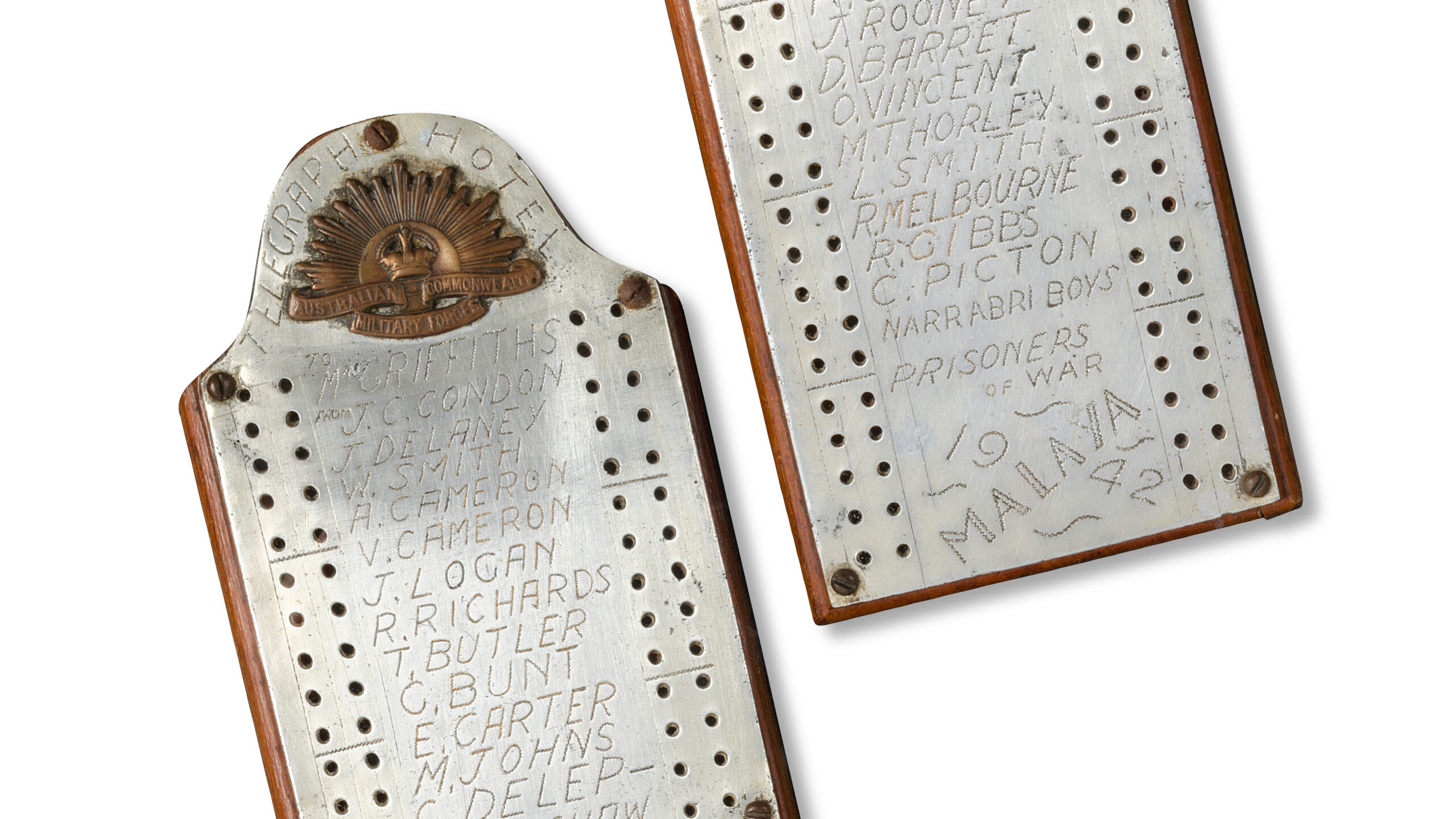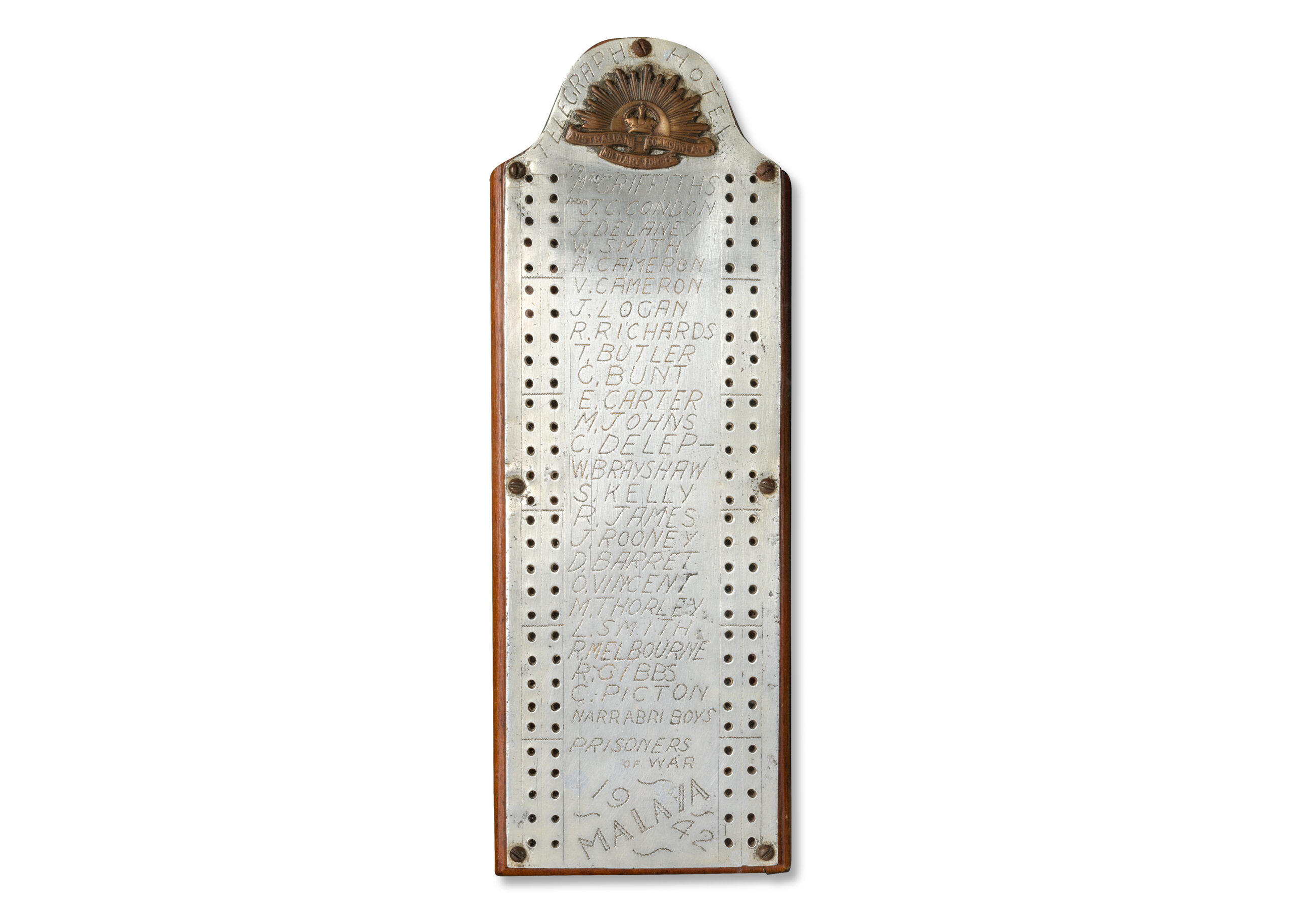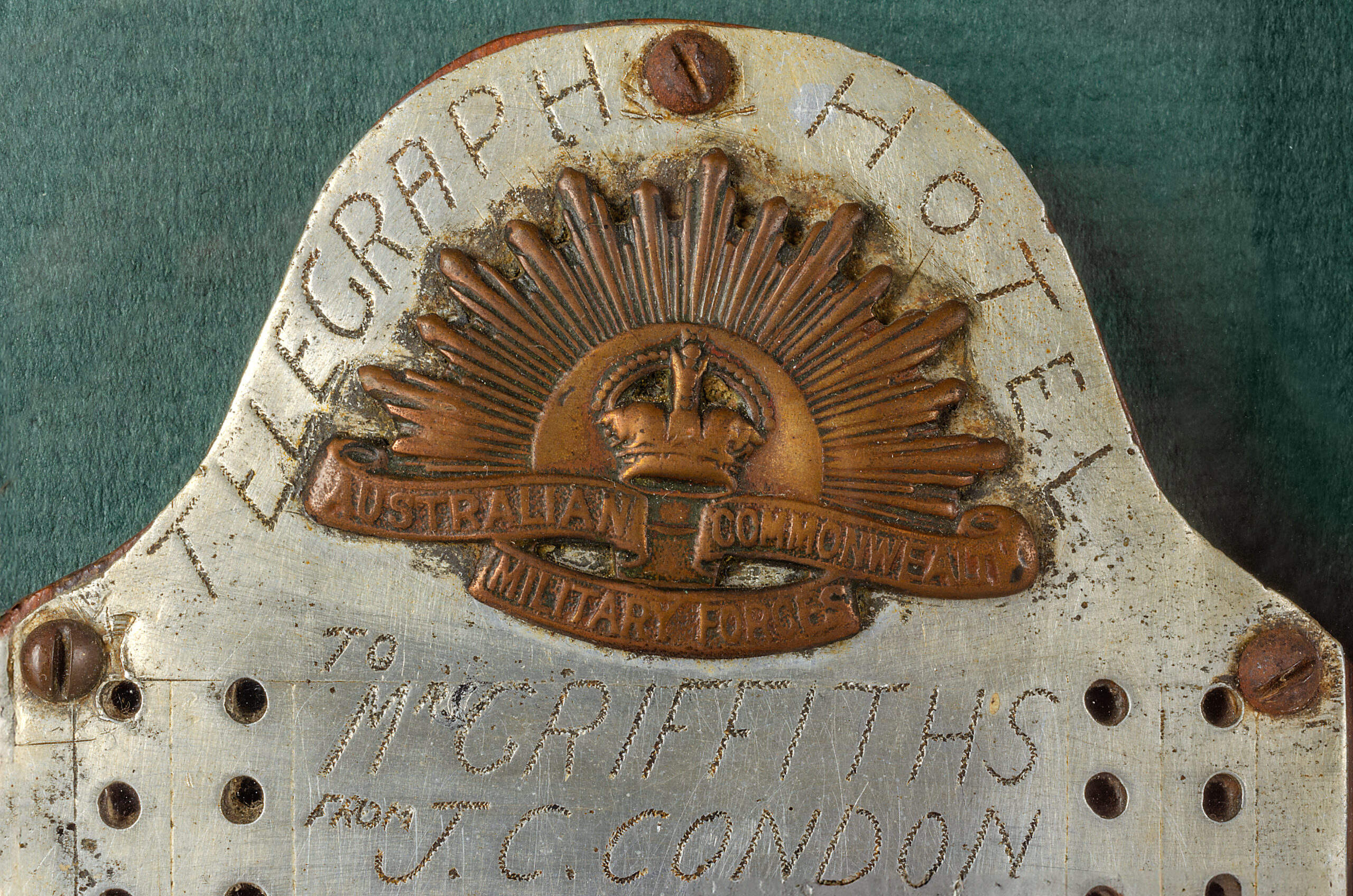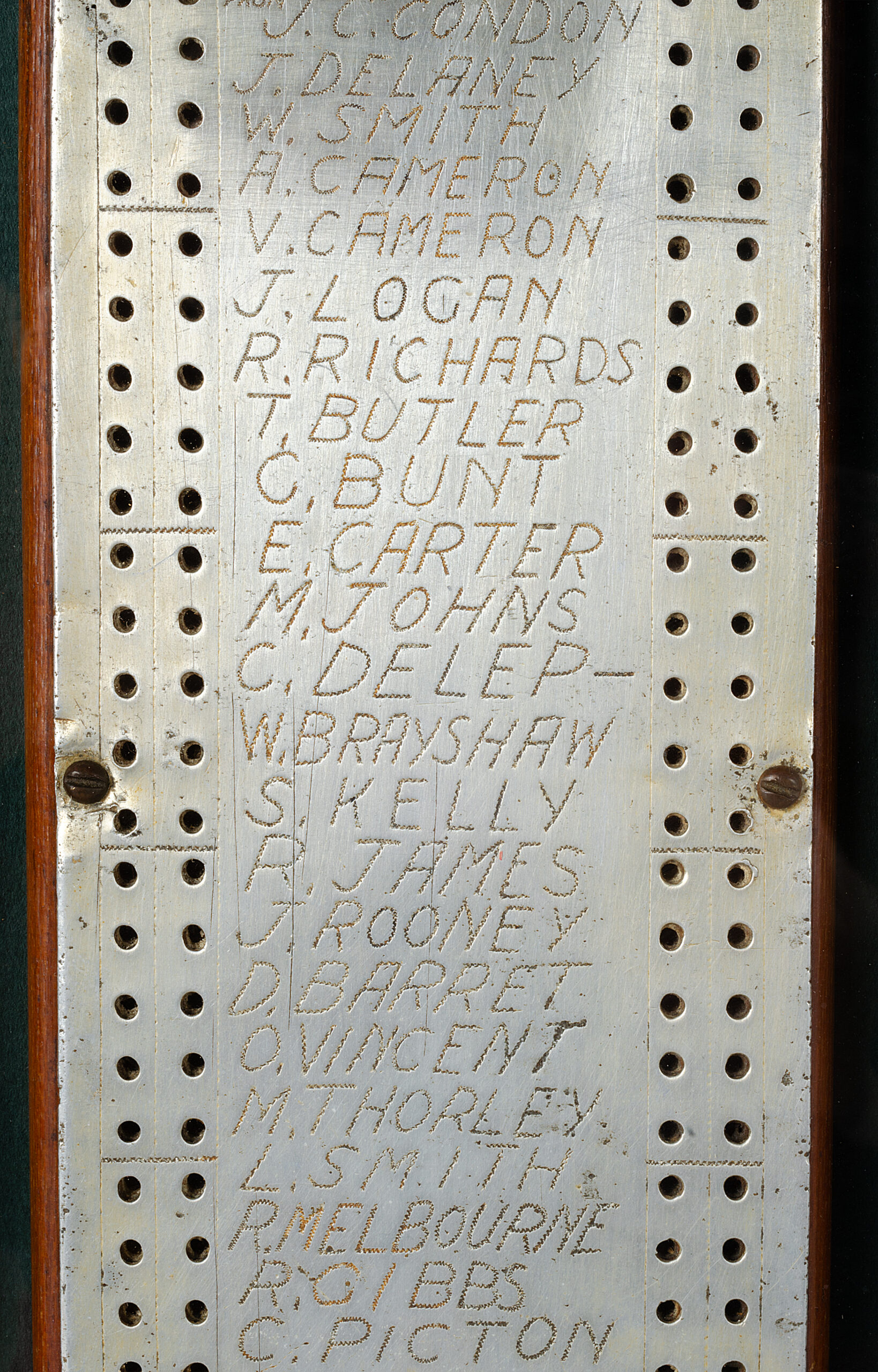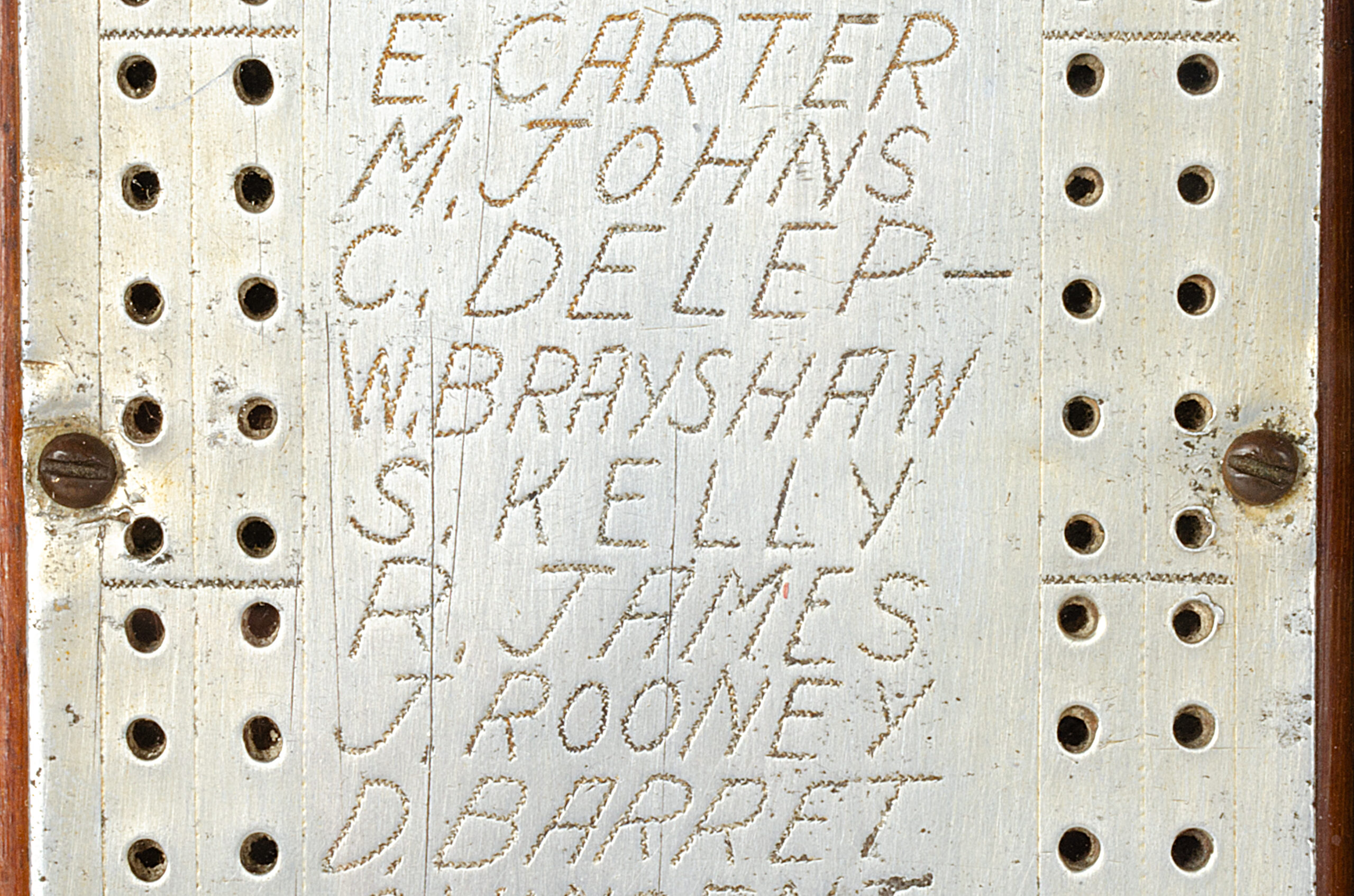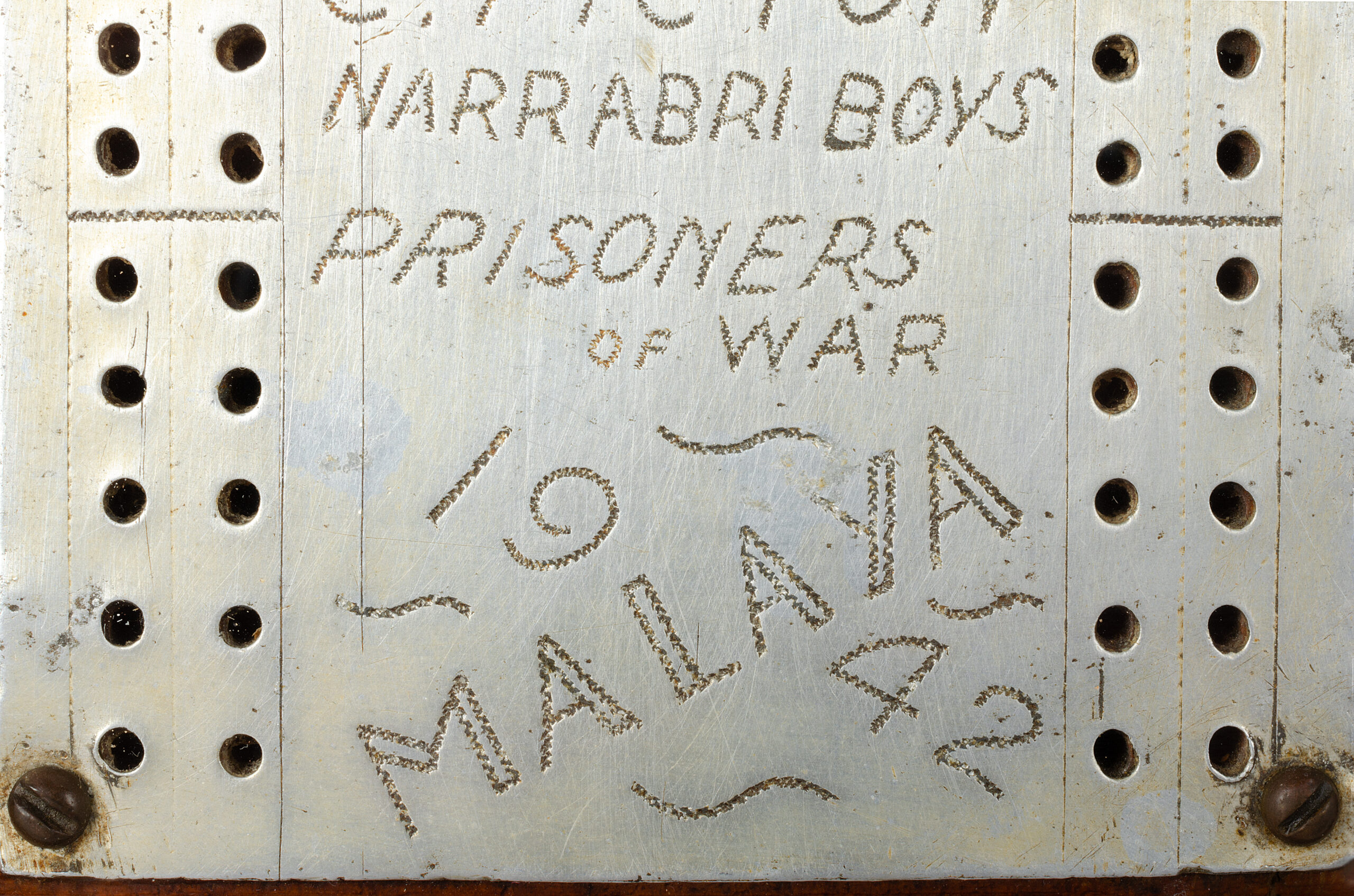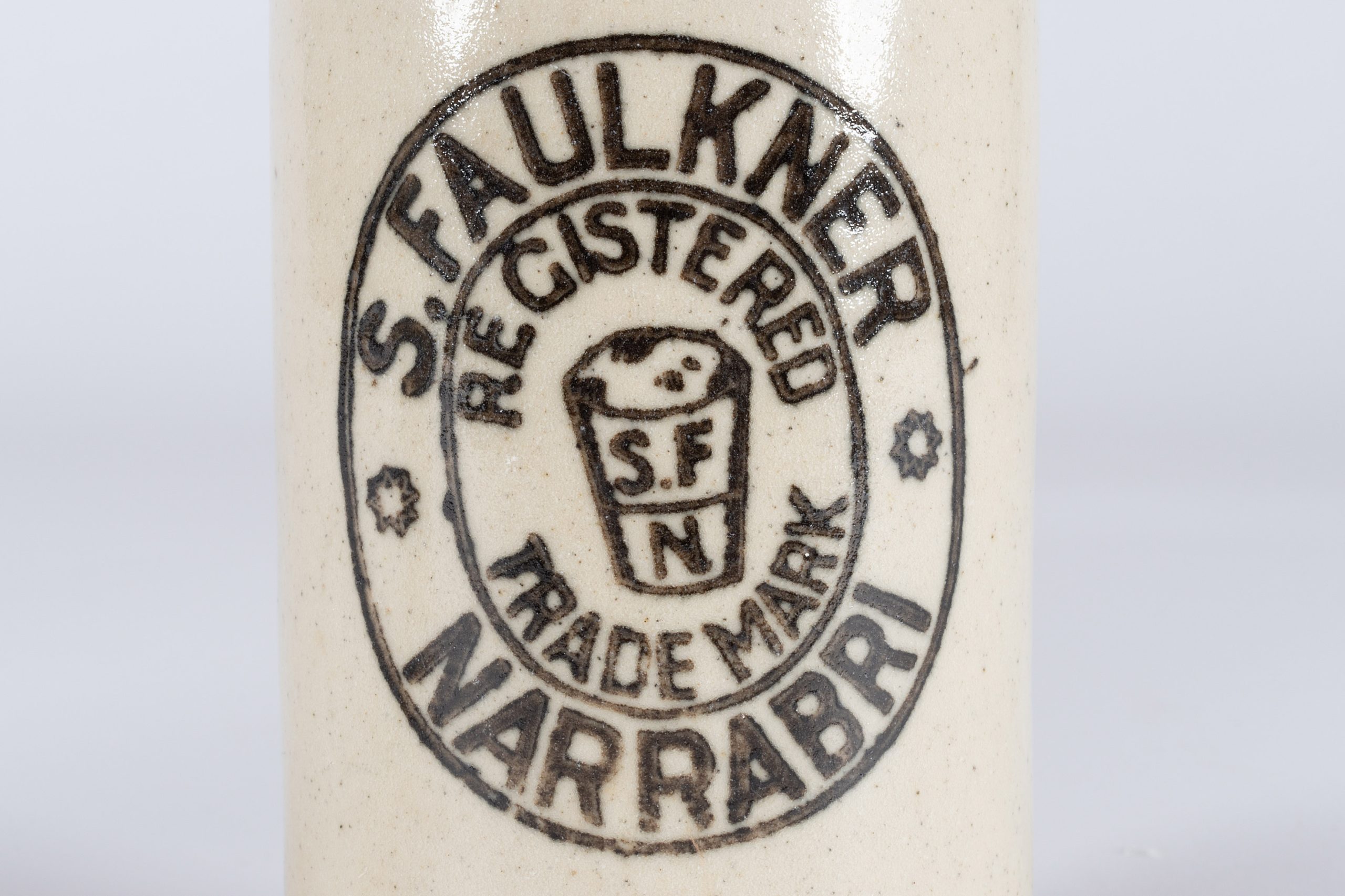Condon’s Cribbage
The Narrabri Boys in Changi Prison
The humidity was dense, and the conditions were harsh. Day after day, Private John Condon endured starvation, forced labour, and tropical diseases while being held captive in Changi’s prisoner-of-war camp.
Serving as part of the 10th Medical Corps, John had been captured by the Japanese on 15 February 1942 (known as Black Sunday) among 15,000 other Australians serving in Singapore. To stave off despair, he and his fellow prisoners turned to more lighthearted activities whenever possible over their three-and-a-half-year internment. For instance, John likely fashioned this cribbage board (used for a popular card game) from salvaged materials while using makeshift tools.
More than a means of passing time, the creation of this board provided John with an opportunity to connect with his community and reflect on life back home. John etched a dedication to his aunt, Mary Griffiths of the Narrabri Telegraph Hotel, and the names of the twenty-three fellow ‘Narrabri boys’ interned alongside him. Some of these boys contributed to the board, adding holes with nails or etching parts of their own names.
The suffering at Changi was brought to an end on 15 August 1945 following Japan’s surrender. Tragically, John did not join his fellow ‘Narrabri boys’ on their journey home. He passed away from a captivity-related illness mere months before the war ended. This cribbage board became his legacy, travelling back to Narrabri with his surviving comrades and into the grieving hands of Aunty Mary.
While the object certainly captures a sense of loss, each engraved name also speaks to the remarkable resilience and creativity which lived in those held captive.


